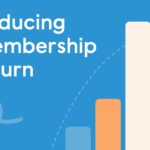Membership dues are more than just a source of income—they’re a vital measure of your association’s health and growth potential. Effectively tracking dues gives you insight into member retention, engagement, and your organization’s financial standing. Yet, many associations struggle with inefficient or outdated systems that don’t provide the full picture.
In this article, we’ll explore how a streamlined approach to tracking membership dues can help you maintain a steady revenue stream, improve member relations, and set your organization up for long-term success.
Ready to optimize how you manage dues and keep your membership engaged? Let’s dive in!
Why Is It Important to Track Membership Dues?
Tracking membership dues isn’t just about staying on top of payments; it’s essential for your organization’s decision-making and strategic growth. Here’s how dues tracking can directly support your goals:
Assess Membership Trends
By analyzing dues trends over time, you can quickly identify patterns in growth or decline. For example, if you notice a drop in annual renewals, this may indicate a need to revisit your engagement strategy or member benefits.
An association that noticed a 10% decline in dues payments acted fast, launching a new member feedback program that helped boost renewals by 15% the following year.
Understand Payment Preferences
Some members prefer to pay annually, while others need installment options to stay on track. Tracking these preferences can help you shape policies that meet members where they are, leading to higher renewal rates and member satisfaction.
For instance, a chamber of commerce introduced flexible payment plans after tracking data showed 40% of members wanted quarterly billing, resulting in a notable reduction in payment delays.
Ensure Timely Follow-Ups
Automated dues tracking lets you send reminders right before renewal dates, reducing missed payments. For example, a nonprofit organization saw a 20% decrease in lapsed memberships by implementing automated reminders. Even in cases of failed autopayments, tracking allows quick follow-ups, so members don’t unintentionally lose their benefits due to something as simple as an expired credit card.
By tracking dues data, your association can make well-informed decisions, enhance member satisfaction, and secure the steady revenue needed to grow and thrive.
How Do Organizations Track Membership Dues?
Organizations track membership dues differently depending on their services and characteristics.
For example, a small, local softball club’s needs are likely different from those of an international professional development association. The membership size, benefits, fees, and structure impact what the organization needs to track and how simple that process is.
Some of the approaches different associations take to track membership data include:
Ad Hoc or Honor System
Best for: Small clubs or informal groups.
Pros: This method can work for very small organizations with limited budgets and a manageable number of members. It’s cost-effective and easy to set up with simple email follow-ups or group reminders.
Cons: However, as membership grows, it can become challenging to keep track of who has paid and who hasn’t. Without a structured approach, there’s a higher risk of missed payments, lack of accountability, and time-consuming follow-ups.
Spreadsheets
Best for: Small to medium-sized organizations looking for low-cost solutions.
Pros: Spreadsheets are affordable and provide customizable templates for tracking dues, giving staff flexibility over data entry. For organizations just starting out or with limited resources, this is a great intermediate step.
Cons: Manually entering data is time-consuming and can lead to errors, especially as membership grows. Updates and reminders must also be managed separately, which can stretch staff time and resources.
Membership Management Software
Best for: Larger organizations or those aiming to grow quickly.
Pros: Association management software automates dues tracking, allowing for scheduled reminders, integrated payment processing, and comprehensive reporting features. This all-in-one approach saves time and reduces errors, allowing staff to focus on member engagement rather than admin tasks.
Cons: While highly effective, the cost of membership management software can be prohibitive for smaller organizations, and there’s a learning curve involved in setup and maintenance.
Selecting the right dues tracking approach depends on your organization’s current size, growth plans, and budget. As your association grows, it may be worth considering a transition to more robust tools to avoid costly tracking errors or administrative overload.
How to Set Up and Monitor an Effective Dues Tracking System
Setting up a reliable dues tracking system and regularly monitoring it can transform your association’s efficiency and member experience. Here are some actionable steps to help you get started and stay on track:
- Choose Your Tracking Method: Based on your organization’s size, budget, and goals, decide on the tracking approach that suits your needs best, whether it’s a simple spreadsheet or an all-in-one AMS platform.
- Establish a Tracking Schedule: Regularly update your dues records, ideally on a monthly basis. Consistency in tracking prevents backlogs and ensures your data remains accurate and up-to-date.
- Set Automated Reminders: If using an AMS, configure automated dues reminders to go out before and after the due date. For manual tracking, designate a staff member to send reminders regularly and ensure they are timely and consistent.
- Monitor Key Metrics: Track important metrics like renewal rates, overdue payments, and payment method preferences. By monitoring these, you can identify trends, such as peak renewal times or common delays, which helps you refine your dues management over time.
- Conduct Regular Audits: Every quarter, review your dues tracking records to identify any discrepancies, missing payments, or opportunities for improvement. This could involve cross-checking data in your AMS or ensuring spreadsheet entries are up-to-date and accurate.
- Gather Feedback from Members: Periodically ask for feedback from members about their experience with your dues process. This can help you understand if there are any pain points, such as limited payment options or timing issues with reminders, and make adjustments accordingly.
These steps create a structured dues tracking system that supports your financial goals and helps maintain positive relationships with members.
Benefits of Using Association Management Software to Track Membership Dues
Association management software (AMS) provides a comprehensive solution to streamline the dues tracking process, freeing your team from manual tracking and allowing them to focus on member engagement and retention. Here’s how an AMS can transform your dues management:
- Automated Renewals and Reminders: AMS platforms automate the renewal process by sending timely, customized reminders before dues are due, minimizing the chances of lapsed memberships. For example, automated reminders can reduce missed payments by up to 25%, according to recent studies from associations using AMS platforms.
- Customizable Payment Options: AMS platforms can accommodate various payment preferences, from one-time payments to monthly or quarterly installments. This flexibility can improve retention, as members are more likely to stay when payment options align with their financial needs.
- Integrated Payment Processing and Security: AMS software integrates payment processors that handle credit cards, ACH, and other payment methods, offering members a smooth payment experience while ensuring data security. Built-in security features protect against fraud and help maintain member trust.
- Comprehensive Reporting and Analytics: Dues tracking through an AMS provides your organization with valuable data on member engagement and payment trends. Leaders can use this data to identify peak renewal periods, the success of payment reminders, and areas for improvement, supporting strategic planning and financial forecasting.
For example, with a platform like MemberClicks, you can automate the entire dues management cycle, from invoicing to follow-up reminders. MemberClicks also enables leaders to analyze trends in real-time, empowering them to make data-backed decisions that improve member retention and overall satisfaction.
Wrapping Up
Tracking membership dues is critical for maintaining your organization’s budget and assessing membership engagement over time. While there are different ways to go about tracking membership dues, using an association management software like MemberClicks helps keep this task organized, quick, and simple.
Not having to spend so much time on tracking membership dues lets your team expand into other efforts to make your association the best it can be for its members. Level up your overall membership management process by checking out some of our additional resources, including:















